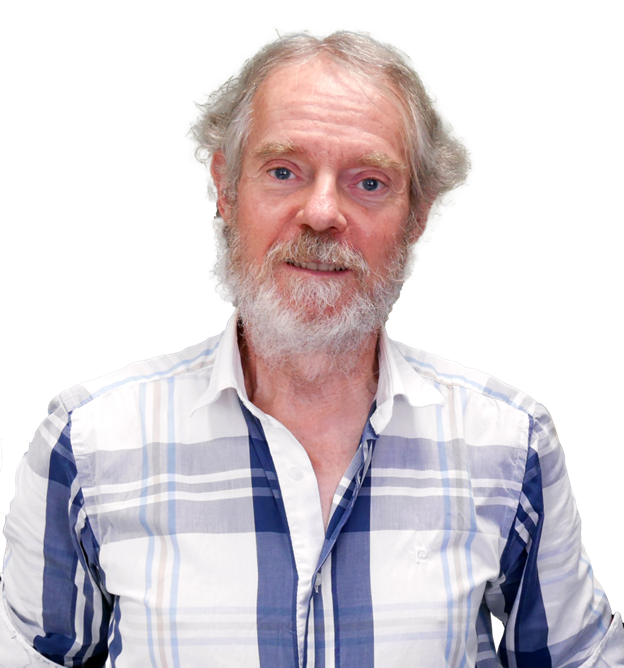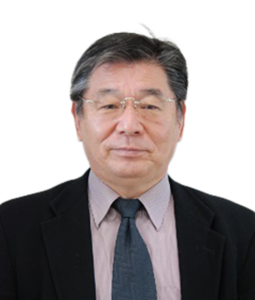Keynotes
Keynote Speaker I |
|
| Keynote Speaker: Prof. Kuniaki Dohda (Northwestern University, USA) | Keynote Title: Applications of DLC Coatings in Manufacturing Process |
|
|
Keynote Abstract: Diamond-like carbon (DLCs) exhibit many attractive properties that make them versatile coating materials for various applications. These include extremely high hardness, very low friction, low gas permeability, good biocompatibility, and high electrical resistivity. Further research is needed to produce hydrogen-free DLC films and to synthesize them with other materials, aiming to improve film properties. “Applications of DLC Coatings in Manufacturing Process” explores emerging manufacturing technologies for DLCs with the goal of enhancing their properties for practical use. In this talk, examples of current applications of tools in mechanical manufacturing, such as metal forming and cutting, will be introduced. This section also covers recent advances in the novel synthesis of DLC films. |
Keynote Speaker II |
|
| Keynote Speaker: Prof. Dr.-Ing. Dipl.-Wirtsch.-Ing. P. Groche (Technische Universität Darmstadt, Germany) | Keynote Title: Wear Detection in Metal Forming |
 |
Keynote Abstract: The non-linear progress of wear poses a challenge to almost all industrial metal forming processes. Typically, wear is progressing slowly during a longer production phase, and accelerating rapidly in the severe wear phase. This can result in the deterioration of product properties and the remaining tool life. Various technologies for wear detection have been proposed. The keynote will motivate the implementation of wear monitoring systems, give an overview about different direct and indirect monitoring approaches. It will also showcase successful implementation examples and discuss their specific limitations. |
Keynote Speaker III |
|
| Keynote Speaker: Pierre Montmitonnet (MINES Paris, France) | Keynote Title: Mixed Lubrication Regime Modelling in Cold Strip Rolling: Toward a More Complete Physical Description of the Boundary Component |
 |
Keynote Abstract: Predictive models are needed to design cold strip rolling pass schedules, investigate process problems and product quality… Due to the huge and complex impact of friction on this process, accurate friction models are necessary. The forward slip e.g. depends not only on average friction, but also on its space-distribution; friction also varies in time, e.g. accelerations and decelerations, resulting in large variations of force, torque and forward slip during transients, which need to be taken into account in the presetting of stands.
Describing space- and time-variations of friction necessitates including the scale at which physical and chemical phenomena determine friction, i.e. the microscale. The lecture will summarize our latest efforts to enrich our mixed lubrication modelling of cold rolling, in search for a more accurate description of what is going on at asperity scale in the strip-roll interface. It involves a macroscale description of the interface temperature profile, criteria for lubricant additive desorption, for asperity scale adhesion and metallic transfer film formation, major phenomena which impact the degree of ploughing friction. Principles of the model will be recalled, and the theoretical results will be confronted with experiments on a high-speed laboratory rolling mill. |
Keynote Speaker IV |
|
| Keynote Speaker: Laurent Dubar (Université Polytechnique Hauts-de-France, France) | Keynote Title: Wear of Hot Forging Tools, Effects of Forming Cycles, Oxide Layer and Coating Topology |

|
Keynote Abstract: The tools used in hot forging processes are exposed to severe cyclic mechanical and thermal loads. These extreme forming conditions can lead to tool degradation through abrasive wear, adhesive wear, cracking, and thermal and/or mechanical fatigue. Such damage compromises the mechanical integrity of the tools and shortens their service life. To optimize tool longevity, several factors must be taken into account, including the properties of the tool material (with or without coatings), tool geometry, oxidation, lubrication, and forging parameters (temperature, pressure, and sliding speed). The aim of this keynote is to present some investigation covering three different aspects of tool wear during the hot forming process of steel or aluminium alloys.
In the first part, we investigate how the number of repeated forging cycles affects the hot forging tools in terms of mechanical properties and microstructure, geometric deformations, and their impact on the evolution of the tribological behaviour. This investigation is developed in three steps. Step one focusses on the effects of the production rate on the tool. Hardness, Young’s modulus, microstructure and surface roughness are measured after 0, 11 800, and 20 000 produced parts. Step two is dedicated to tribological tests. Tests are performed using industrial tools as contactors and allow to quantify the evolution of friction with the production rate. Finally, these data are used in a FEA of the process to quantify how the worn surface of the tool between its first use and its end of life affects the tool stresses and the workpiece shapes. The second part deals with the lubricant/oxide layer interaction in hot steel forming. The hot forging of high-alloyed steel at temperature between 850 and 1250°C may lead to the formation of complex oxide layer. If the oxide layer may be useful as it builds a thermal barrier reducing the cooling down of the hot work piece, it is fragile, easily broken by the workpiece deformation and by the interaction with the lubricants, and leads to surface defects due to oxide scale removal or embedding. Moreover, it is common to use nitrided hot forging tool. Consequently, iron oxides at workpiece surface competes with oxides formed by other alloying elements, such as chromium or molybdenum, and the nitrogen resulting from tool nitriding. This competition can disrupt, modify, retard, or accelerate oxidation phenomena, ultimately resulting in the incorporation of these elements within cracks or deep cavities. The present work involves a multiscale analysis of the billet/tool contact conditions. The macro-scale analyse is adjusted to simulate the industrial forging process in term of tool and workpiece temperature, contact pressure and sliding speed. It comes that both crushed and embedded oxides are found to be present on the cross section of the tested samples. Friction tests are then performed at a micro-scale level to have a better understanding of the results of the macro-scale tests. The micro-scale tests are performed on the same materials, with contactor and specimen temperature adjusted to the interface temperature of the process. The reduce scale of the tests allow to detect that a stick-slip phenomenon occurs due to accumulation of the crushed oxides, which transform the interfacial contact conditions from a lubricant/oxide configuration to an oxide/oxide condition. The last part discusses how AlCrN, TiAlN, and Arc-DLC coatings may limit galling defects in the dry hot forging of aluminium alloys. First, experiments are performed on the Worm and Hot Upsetting Sliding Test (WHUST) at temperatures between 300˚C and 500˚C, at a sliding speed of 0.5 mm/s, and with contact pressures between 40 MPa and 100 MPa. The results show that the Arc-DLC coating had better efficiency in alleviating the aluminium transfer issue than the AlCrN and TiAlN coatings. Then, interrupted friction tests are performed on Arc-DLC coatings to identify the mechanisms of aluminium transfer on the forming tool (galling onset). It comes that the aluminium transfer is mainly caused by mechanical ploughing during the initial stage of sliding, and then, moves to mechanical ploughing and/or adhesive bonding, depending on the testing temperatures and the sliding speed. Finally, Machine Learning (ML) is involved to help in the identification of the mechanisms of aluminium transfer. ML are used on data coming from the surface topographies and on pictures coming from the SEM analyses. Five simple ML algorithms and a custom Convolutional Neural Network (CNN) architecture, respectively, were used. Results prove that the ML with topographic data and the CNN with SEM image data had the potential to identify the wear characteristics. |
Keynote Speaker V |
|
| Keynote Speaker: Prof. Steven R. Schmid (UNC Charlotte, USA) | Keynote Title: TBA |
| Keynote Abstract: TBA | |
Keynote Speaker VI |
|
| Keynote Speaker: Prof. Gracious Ngaile (North Carolina State University, USA) | Keynote Title: Tribology in Tube Hydroforming |
|
|
Keynote Abstract: In the Tube Hydroforming (THF) process, the frictional behavior at the tube–die interface evolves dynamically due to variations in internal pressure and axial feed. These changes in loading path influence contact conditions in both time and space, making tribology a critical factor in determining the overall success of the process. This keynote presentation will explore lubrication mechanisms encountered in both feed-driven and expansion-driven THF operations, with emphasis on how frictional response varies with contact pressure, material expansion, and sliding velocity.Recent advances in hydroforming have introduced dual-pressure strategies, where the combination of internal and external pressure cycling promotes reflow and redistribution of lubricant across the contact interface. This approach has been shown to lower interfacial friction, reduce tool wear, and improve material flow, especially when used in conjunction with low-friction interface materials or specially formulated lubricants. Surface treatments such as controlled roughening or texturing of the tube surface have also been demonstrated to enhance lubricant retention and minimize localized sticking, leading to improved formability and surface quality.
In terms of evaluation, significant progress has been made in replicating THF contact conditions through tribological testing platforms, such as tube-sliding tribometers. These allow for the characterization of friction as a function of contact pressure and relative velocity, which is critical for selecting lubricants and validating simulation models. Modern finite element tools increasingly incorporate pressure- and velocity-dependent friction models, replacing the traditional assumption of constant coefficients of friction. These models enable more realistic simulation of material flow, thinning behavior, and tooling loads in THF processes. Additionally, the development of sustainable lubrication solutions has gained attention. Water-based gel lubricants incorporating nano-additives, such as silica particles, have shown the potential to deliver ultra-low friction under high-pressure forming conditions. Solid lubricant coatings and advanced boundary lubrication films are also being investigated for their ability to form persistent tribo-films and maintain performance under severe contact. This presentation will provide a comprehensive overview of the evolving landscape of tribology in tube hydroforming. It will highlight current practices, emerging lubrication technologies, and the role of numerical modeling in advancing the understanding and control of interface behavior. Emphasis will be placed on linking tribological evaluation methods to actual process conditions, with the aim of improving formability, enhancing process robustness, and extending tool life in industrial THF applications. |

